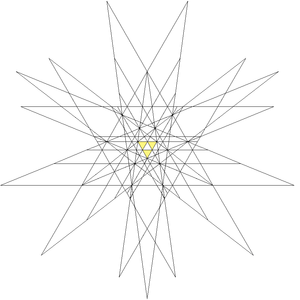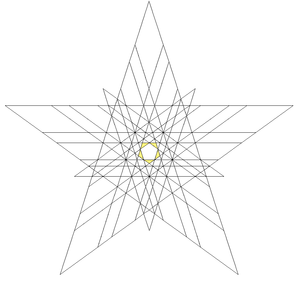Compound of dodecahedron and icosahedron
| First stellation of icosidodecahedron | |
|---|---|
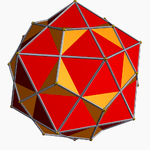 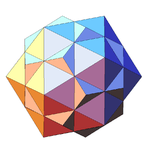 | |
| Type | Dual compound |
| Coxeter diagram | |
| Stellation core | icosidodecahedron |
| Convex hull | Rhombic triacontahedron |
| Index | W47 |
| Polyhedra | 1 icosahedron 1 dodecahedron |
| Faces | 20 triangles 12 pentagons |
| Edges | 60 |
| Vertices | 32 |
| Symmetry group | icosahedral (Ih) |
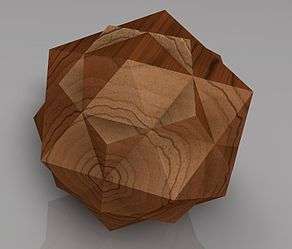
A rendering of a wooden dodecahedron-icosahedron compound.
In geometry, this polyhedron can be seen as either a polyhedral stellation or a compound.
As a compound
It can be seen as the compound of an icosahedron and dodecahedron. It is one of four compounds constructed from a Platonic solid or Kepler-Poinsot solid, and its dual.
It has icosahedral symmetry (Ih) and the same vertex arrangement as a rhombic triacontahedron.
As a stellation
This polyhedron is the first stellation of the icosidodecahedron, and given as Wenninger model index 47.
The stellation facets for construction are:
In popular culture
In the film Tron (1982), the character Bit took this shape when not speaking.
References
- Wenninger, Magnus (1974). Polyhedron Models. Cambridge University Press. ISBN 0-521-09859-9.
External links
This article is issued from Wikipedia - version of the 9/17/2014. The text is available under the Creative Commons Attribution/Share Alike but additional terms may apply for the media files.
